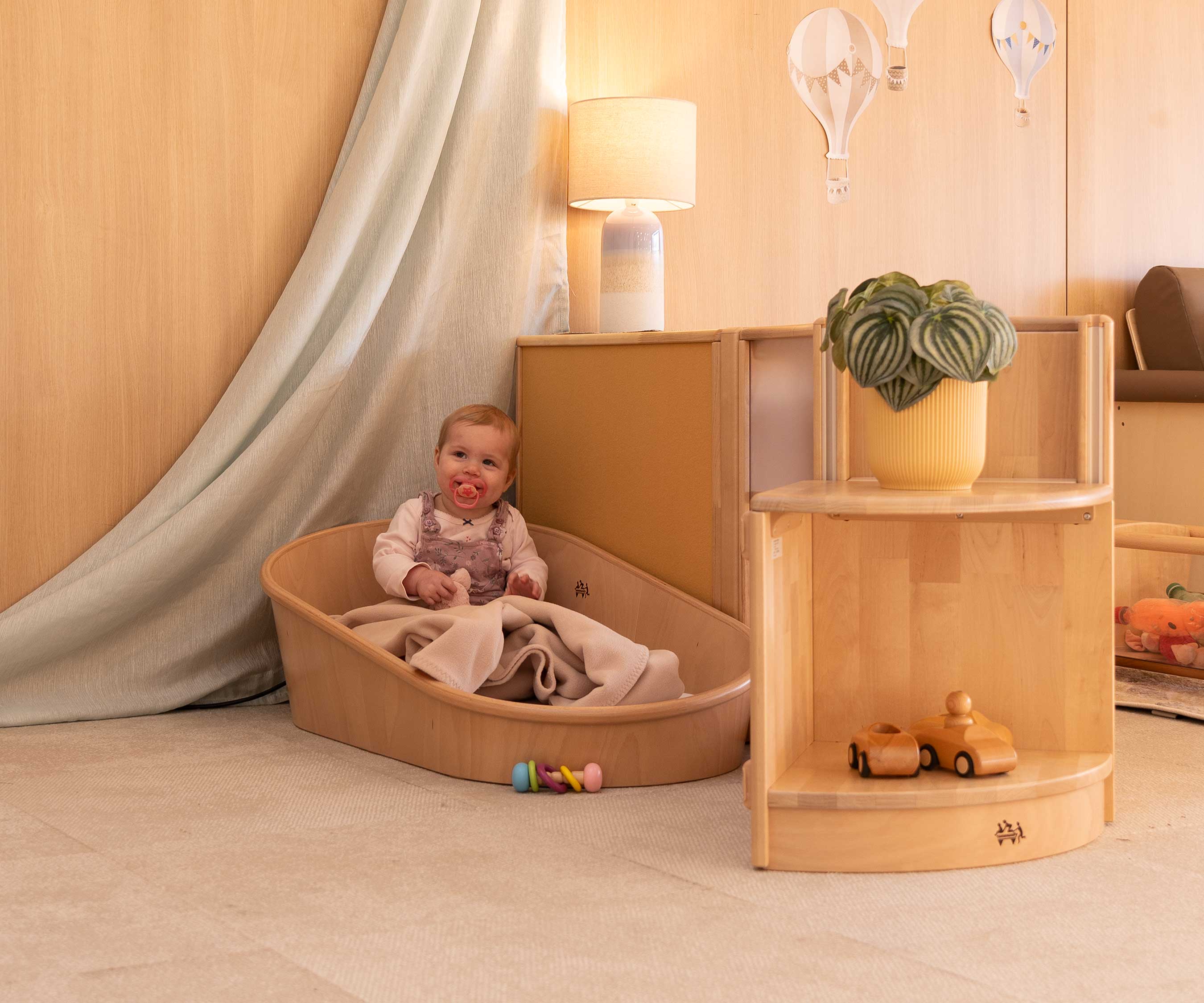Establishing a school-based nursery provision
This basic overview aligns with guidance from the Department for Education, dated 17 October 2024. A high-quality learning environment requires furniture that is robust, durable, and safe for young children and adults, contributing to the overall ‘look and feel’ of the nursery. It should be easy to use, clean and maintain. Community Playthings furniture is tested to appropriate standards with a 15-year warranty. Every product is size and age-appropriate, sustainably sourced and recyclable (solid wood), with ISO 14001 accreditation.
View age-appropriate furniture in sample classrooms:
Zoning your room
Good visibility between spaces for supervision is recommended and can be achieved through open-plan arrangements, low level furniture and the use of glazed screens in partitions and doors. Roomscapes panels are sturdy partitions that can be rearranged tool-free.
Select your own panels and connectors, or buy preconfigured collections that can be rearranged to fit your space. Panels, available in any shape or size, come in three options: bamboo for a natural aesthetic, pinboard for display purposes, and glazed (clear or translucent) to optimise cross-room supervision.

Shelving and storage
Wall cupboards and moveable units for toys and learning resources.
- Fixed solutions offer high levels of storage.
- Non-fixed solutions provide flexibility.
Entry into the nursery
A well-presented and organised welcome area smooths transitions at both ends of the day.
- Personalised pegs, benches, or cubbies for belongings.
- Suitable for coats and bags, food, shoes, and materials storage.
- Cloakroom area can act as a draught lobby to the outside if provided as a separate room.
Suitably sized gates, accessible for wheelchair users and buggies.
- Doorsets suitably robust with anti-finger trap hinges.
- Latches prevent easy opening by small children.


Sleeping
For children under three years, consider suitable safe sleeping provision. A dedicated quiet area can be created using panel dividers (see room plan).
Watch a video on the benefits of self-selected sleeping.
Eating
Complex social behaviours are learned and practiced in a calm, organised and interactive dining area, with low-level tables and chairs.
Watch a video on the benefits of flexible furniture.


Changing
A discreet changing facility, directly accessible from the classroom, ensures the child’s dignity is maintained. Roomscapes panels and shelves placed around the changing table provide privacy without compromising supervision.
Steps give children more independence, so nappy changes are a relaxed and comfortable experience for both child and caregiver.
Supplementary spaces
To create a more supportive, inclusive and versatile learning environment for all children, consider a calming space for children to relax and collect their thoughts away from others to support emotional regulation. A perfect space to undertake individual or small group activities.
Adapt a space to meet the needs of children with special educational needs and disabilities (SEND).


Space for staff
In addition to locker space in the staff room, nursery staff need a space for desk-based work and informal meetings, as well as storage for personal items. This could be a shared space with the rest of the school, but consider the teacher standing desk for a tidy, organised space within the nursery classroom.
Wall cupboards also offer lockable cabinets for medicines, teaching resources, and iPad storage.













